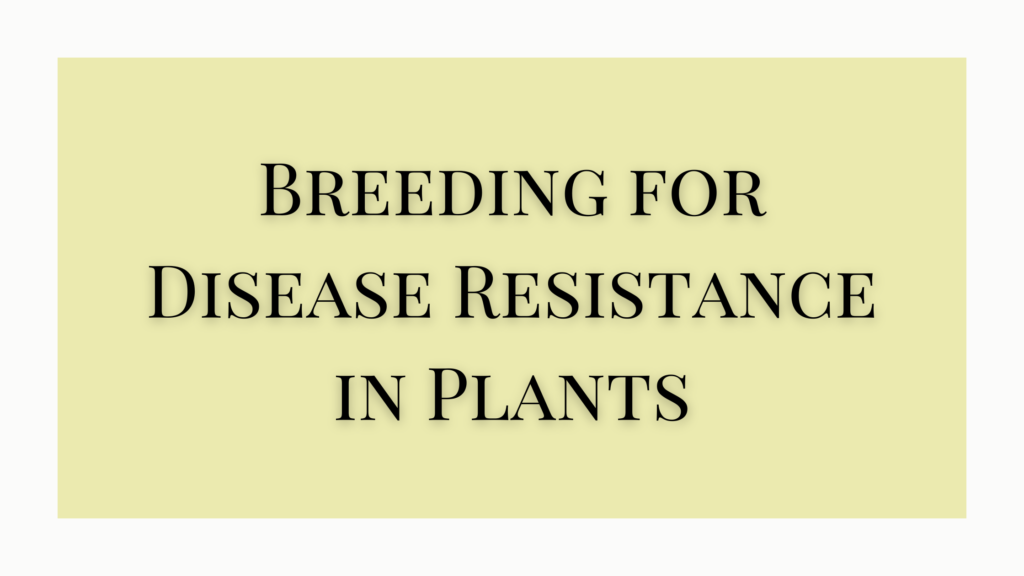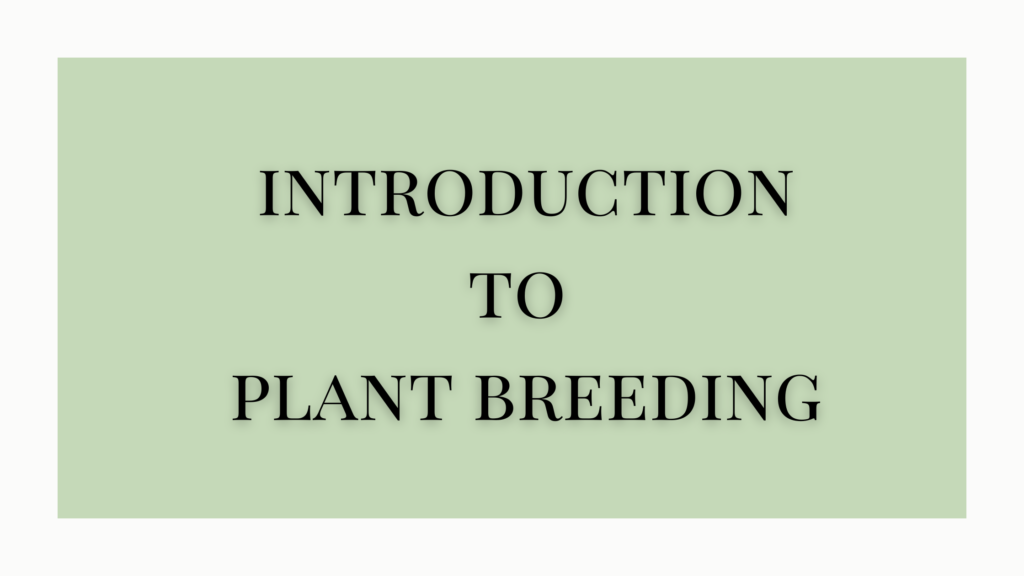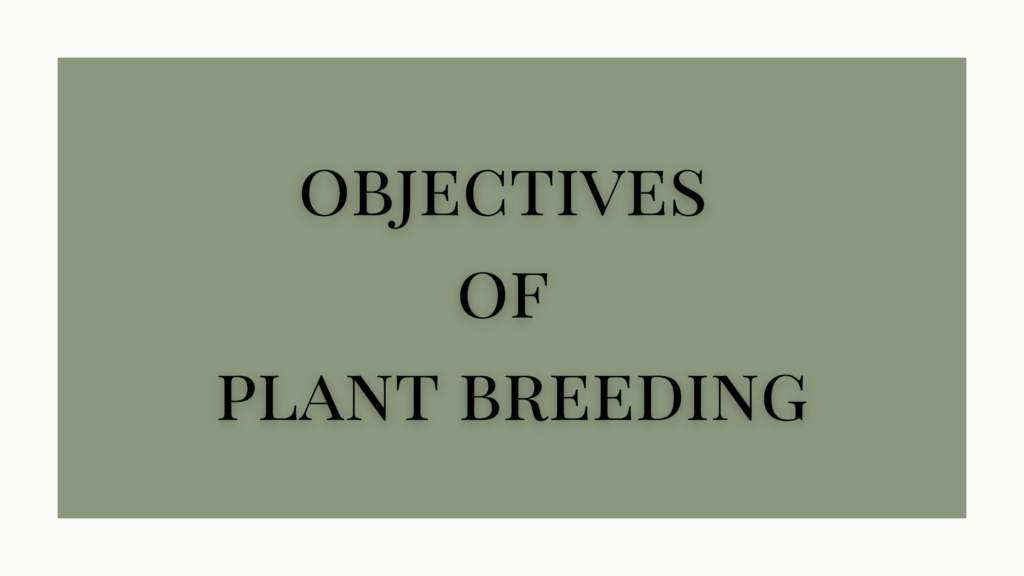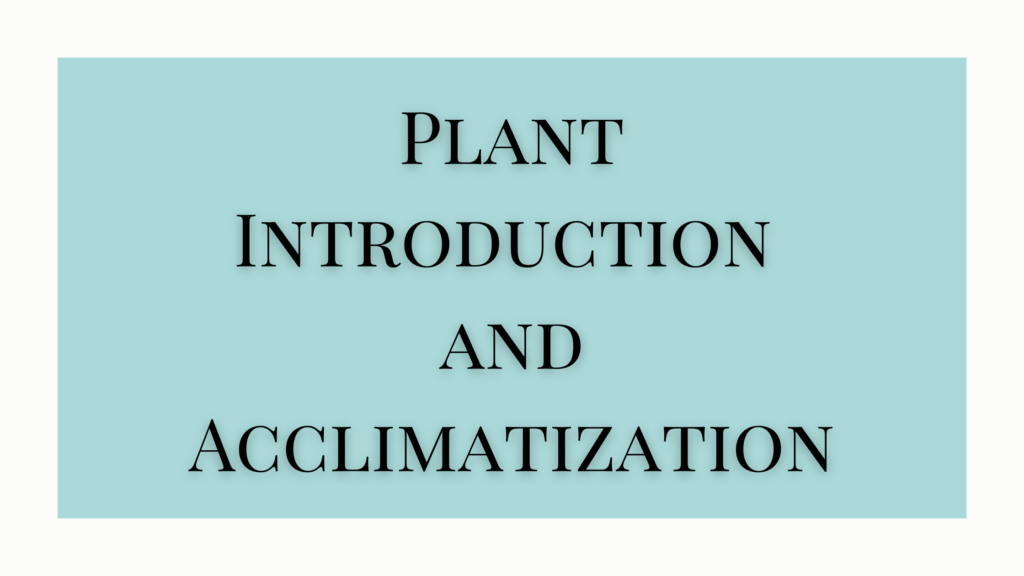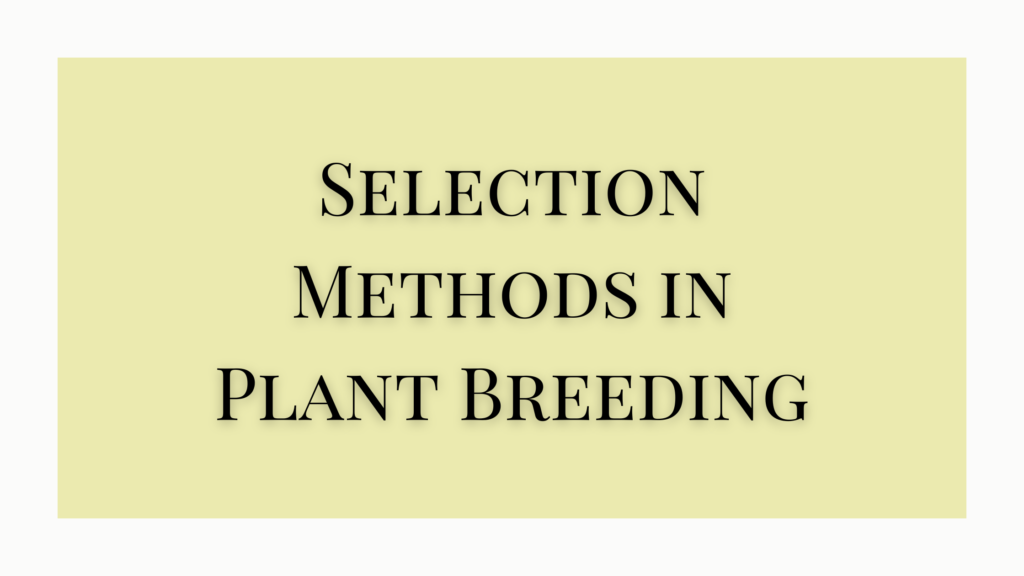Disease is an abnormal condition caused by an organism or a deviation from the normal functioning of the physiology of an organism due to a fungal, bacterial, or viral attack, nematodes, insects, etc. Breeding for disease resistance in plants is one of the common ways to tackle this issue.
A plant affected by the disease is called the host while the organism that causes the disease is termed the pathogen. The abnormality is caused by non-biological environment or genetic factors present in the host are not considered a disease.
In plants, diseases are expressed by various symptoms like spotting, wilting, smutting, etc. The extent of damage may vary with infection and the nature of the host. Diseases reduce the total biomass (dry matter weight) production by a drop in one or more of the following ways.
- Killing of plants
- Killing of branches
- General stunting
- Damage to leaf tissues, reproductive organs, fruits, seeds, etc.
A disease can lead to the disappearance of excellent but susceptible varieties from the fields. However, it was noted that cultivated varieties differed in their ability to avoid diseases. Biffen (1905) was the first to report that resistance to yellow rust in wheat is governed by a recessive gene. Systemic resistance breeding began only after this observation.
In modern times, resistance varieties are the foremost contribution to plant breeding. The stability of production depends only on resistant varieties.
Blast disease in paddy by Pyricularia oryzae, stem rot by Helminthosporium, brown spot by Helminthosporium oryzae, etc reduces the yield of rice cultivation. Tikka disease of ground nut, yellow mosaic disease of Munk (Vigna radiata) rust of wheat, wilt of cotton, Mosaic disease of Tobacco, etc are other examples of reduced yield due to diseases.
Disease Control in Plants
Diseases can be controlled by two methods- phytopathological methods and by growing disease-resistant varieties.
Phytopathological measures are used to prevent or eradicate pathogens, but disease-resistant varieties can resist the pathogen attack. This disease resistance may be due to certain morphological features that enable the plant to resist the attack or due to protoplasmic resistance triggered by the production of certain chemicals in the plant body in response to the attack.
Disease-resistant varieties can be evolved by various breeding methods such as introduction, selection, hybridization, budding, grafting, mutation, polyploidy, breeding, etc.
It should be noted that pathogens can also evolve themselves to produce variability to make them capable of attacking the host that has better resistance. Pathogens show a range of flexible mechanisms to improve their capability to attack such disease-resistant varieties.
A pathogen race capable of attacking a host carrying a specific resistant gene is termed virulent towards that gene. On the other hand, those unable to attack the host are called avirulent.
Development of Disease
The development of disease by pathogen has four well-defined stages
- Contact
- Entry
- Establishment
- Development
Contact refers to the landing of the pathogen on the host tissue. It has still not entered the plant tissue.
Entry is the stage where the pathogen gains entry into the host cell. During this stage, usually, the spore from the pathogen germinates and enters the host cell through natural openings such as stomata, wounds, etc. but many pathogens can enter through epidermal cells by producing hydrolytic enzymes. Both contact and entry stages are greatly affected by the environment and provide the means for disease escape.
The establishment stage begins as soon as the pathogen gains entry into the host cell. In this stage, the pathogen spreads or proliferates within the host tissue. At this stage, there will be no symptoms to indicate a disease.
Symptoms start showing in the next stage called development. This stage is characterized by the development of symptoms and is generally associated with the production or multiplication of spores. The rate of spore production or multiplication is a crucial factor in the spread of disease as it serves as an inoculum for infected plants.
Disease Resistance and Disease Escape
Disease resistance in the host involves a restriction on the establishment and particularly multiplication. In most of the cases, disease resistance, infection, and a certain degree of establishment do take place. However, due to the resistance, the degree of establishment and spore production is reduced.
Disease escape of plants refers to the escape of susceptible host varieties from diseases due to environmental factors. It is primarily by avoiding contact. Even if there is contact, the unfavorable weather conditions prevent infection.
The disease escape may be a result of environmental factors, early varieties, changed date of planting, use of resistant root stalk, control of disease carriers, and control of the pathogen itself. Disease development happens under a suitable environment leading to the spore germination of the pathogen and infection.
However, the unfavorable conditions reduce or prevent the spore germination and infection. For eg., Susceptible varieties of potato escape late blight attacks in years when the growing period is relatively dry. Early varieties often escape diseases since they mature before a disease epidemic occurs. Similarly, early ground nut variety generally escapes tikka disease.
Types of Host Varieties
The host varieties are classified into different groups based on resistance and susceptibility.
- Susceptible: Here, disease development is profuse and is not checked by the genotype of the host.
- Immune reaction: When the host does not show symptoms of the disease it is called immune reaction. Immunity may result from the prevention of pathogens from reaching the appropriate part of the plant.
- Resistance: Resistance denotes less disease development. Infection and establishment do take place but growth of the pathogen in the host tissue is restricted.
- Tolerance: Here, the host is attacked by a pathogen but no loss in biomass production or yield happens.
Mechanism of Disease Resistance in Plants
There are four mechanisms for disease resistance such as mechanical, hypersensitivity, antibiotics, and nutritional.
- Mechanical resistance: Certain mechanical or anatomical features of the host may prevent infections. Eg. Closed flowering habit of wheat and barley, silica present on the surface of leaves, etc.
- Hypersensitivity: In a large number of cases, there is an immune reaction due to the hypersensitivity of the host. Immediately after the infection, several cells surrounding the point of infection would die. This leads to the death of the pathogen or at least prevents the production of spores.
- Antibiotics: resistance in several cases is due to the presence of toxic substances in the host cells.
- Nutritional: Favourable physiological conditions in the host may reduce the rate of disease establishment.
Genetic Basis of Disease Resistance in Plants
The genetic basis of disease resistance was first published by Biffen. He found out that a wheat disease, yellow rust disease in wheat, caused by Puccinia glumira can be controlled by a single recessive gene. Disease resistance may be inherited in three ways.
- Oligogenic resistance is governed by one or a few genes whose individual effect is very clear. Olegogenes generally induce an immune reaction. Eg. Genes for powdery mildew resistance in barley, rust resistance in wheat, etc.
- Polygenic resistance, also called minor generic resistance, and governed by many genes where the individual effect is not marked.
- Cytoplasmic resistance is where the resistance is governed by cytoplasmic genes or plasma genes. Eg. The Male sterile ‘T’ cytoplasm in Maize is extremely susceptible to Helminthosporium but leaf blight while non-T cytoplasm is resistant to this disease.
Methods Of Breeding for Disease Resistance in Plants
Methods of breeding for disease resistance are essentially the same as other agronomic factors. Methods like selection, introduction, mutation, hybridization, etc are commonly used.
Effective breeding for resistance depends on the identification of resistant plants from susceptible ones with a degree of certainty. Many susceptible plants may also be classified as resistant plants.
Incidence of diseases under natural conditions varies from year to year and the subsequent spreading on the field will be generally uneven. So, disease resistance tests may be carried out in the field or in a glass house.
Common diseases such as wilts, root rot, damping off, etc are soil-borne diseases while a vast majority of diseases such as leaf spots, mildews, smuts, etc are airborne diseases caused by fungi. Very few diseases are seed-borne.
For disease-resistance breeding, a thorough knowledge of the pathogen is a prerequisite. These pathogens are carried by vectors. Most of the viral diseases are transmitted by insects called vectors.
For the inoculation of diseases, the insects feeding on diseased plants are collected and transferred to healthy plants. Mechanical injury is necessary to facilitate the entry of pathogens into the host tissue.
It is often necessary to create artificial epiphytotic or epidemics, ie, the heavy incidence of disease produced by artificial means. The success of artificial epidemics depends upon precise knowledge of the pathogen and the various conditions required for heavy infection. Furthermore, knowledge of pathotype differentiation in pathogens and the prevalent pathotypes is also essential for a meaningful breeding program.
An epidemic is a severe outbreak of disease beginning from a low level of infection. Factors that promote disease epidemics are,
- Narrow genetic base which is not flexible enough genetically to adapt itself to pathogens.
- Large acreage under single varieties.
- Introduced pathogens – when introduced from outside, the level of the crop may not be resistant to it. E#g. potato late blight in Europe.
Advantages of Breeding for Disease Resistance in Plants
Control of diseases and insects, or pests through resistance breeding has plus points over other methods.
- Once incorporated, resistant varieties go a long way in protecting crop losses due to pests and diseases.
- Cheapest way to control and doesn’t add to the loss of production.
- Since resistance is built-in, ie, is ever ready, unlike chemicals that need to be applied repeatedly.
- It is the only control measure against many diseases where chemicals or other control measures are not available. For eg, wilt, root rot, Smuts, some nematodes, bacterial blight, etc.
- From the cultivators’ point of view, it is the surest and best control measure as others have not been effective, except the variety.
- These are safe for humans unlike harmful pesticides, fungicides, etc.
- It can control pests and diseases without poisoning or polluting the environment.
- The success of control does not depend on external variations as in the case of other factors.
